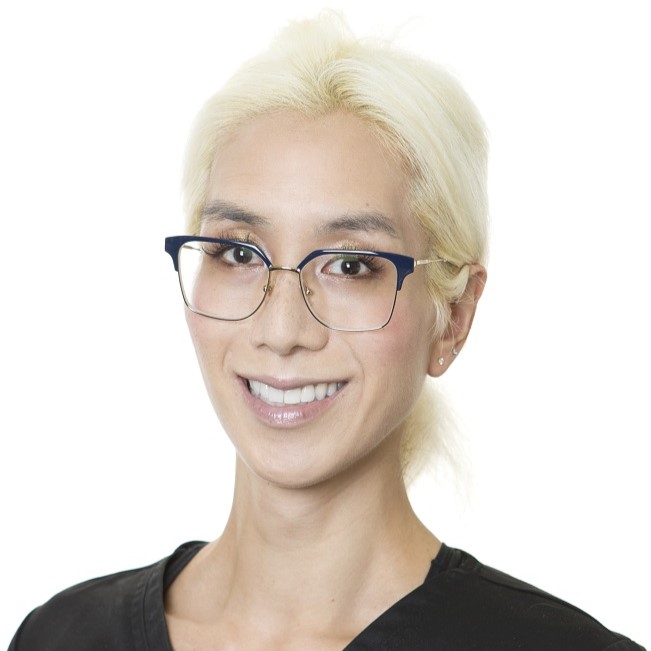Less is More. Minimally Invasive LESS-ons
FREE On-Demand Webinar
Presenter

Dr. Clarence Tam is originally from Toronto, Canada, where she completed her Doctor of Dental Surgery and General Practice Residency in Pediatric Dentistry at the University of Western Ontario and the University of Toronto, respectively. Clarence’s practice has a focus on restorative and cosmetic dentistry, and she strives to provide consistently exceptional care with each patient. She is well-published in both the local and international dental press, writing articles, reviewing submissions, and developing prototype products and techniques in clinical dentistry. She frequently and continually lectures internationally.
Clarence has multi-faceted dentistry experience that extends across multiple tiers of leadership. She is the immediate past Chairperson and Director of the New Zealand Academy of Cosmetic Dentistry. She is one of merely two dentists in Australasia who are Board-Certified Accredited Members of the American Academy of Cosmetic Dentistry (AACD). Moreover, Clarence maintains Fellowship status with the International Academy for DentoFacial Esthetics. She sits on the Advisory Board for Dental Asia, and is part of the Restorative Advisory Panel for Henry Schein Dental New Zealand. Aside from the professional organisations she belongs to, Clarence is a Key Opinion leader for an array of global dental companies, including Triodent, Coltene, Kuraray Noritake, Hu-Friedy, J Morita Corp, Henry Schein, Ivoclar Vivadent, Kerr, GC Australasia, SDI, and Dentsply Sirona. Moreover, she is the sole Voco Fellow in New Zealand and Australia.
Clarence participates in a number of charitable endeavors and takes great pride in achieving beautiful smiles for patients in and around her community. She sits on the board of Smiles For the Pacific, an educational trust and charity that aims to expand professional dentistry services across the entire South Pacific region. She is involved with Delta Gamma Sorority and aims to spearhead projects harmonious with Service for Sight in the South Pacific.
Session Overview:
The delegate will review digital and analog shading techniques for direct and indirect restorations. The need to blend as well as maximize bond strength drives modifications in both preparation and material depending on the intraarch and intratooth position and size. Controlling tooth position especially when balancing spaces with pre-prosthetic orthodontics is critical, especially when a maxillary lateral incisor is involved. Where should the peg lateral be placed for a harmonious result? A predictable freehand approach to recreation of the lingual and proximal frames will be reviewed, before a treatise on various dentin layering approaches to fool the eye and add depth of character. Finishing is a key element in creating undetectable restorations and armamentaria will be specified. What parts of the palatal aspect of upper anteriors is responsible for maximal strain in function and how do we best recreate these areas? How do we address cracks in teeth and how do we know which ones are critical and which ones to leave? How do we use our Diagnodent intraoperatively to help in determining our caries removal end points? How critical is the use of Chlorhexidine in our bonding protocol and what does not using it mean for prognosis? White spots are a practice builder, but how do we know when to use micro abrasion and when it will likely fail? How many cycles of resin infiltration are possible and how do we modify the standard protocol to maximize infiltration success? A discussion of various minimally invasive fixed replacements for anterior missing teeth will be reviewed and the hierarchy of preference.
Learning Objectives:
- The delegate will review the anatomy behind an invisible direct anterior restoration and tips for shading and material selection to achieve this.
- The delegate will review ideal spacing of a peg lateral incisor to allow for anatomically correct zenith position and coronal axial angulation.
- Strain resistance and fracture toughness are two of the key factors allowing for survivability of the intact tooth. Learn how to recreate this with materials available today.
- Teeth have cracks. Which ones are important and which ones should be dissected? Learn a balanced approach to treatment.
- Resin infiltration sounds good, but what order should it be implemented. When do we stop? Tips for maximising success will be presented.
- The missing lateral incisor is emotionally-debilitating for all patients but especially in the formative years of social development. What options allow us the best maintenance of soft and hard tissue structures? What is the preferred sequence of treatment options?
